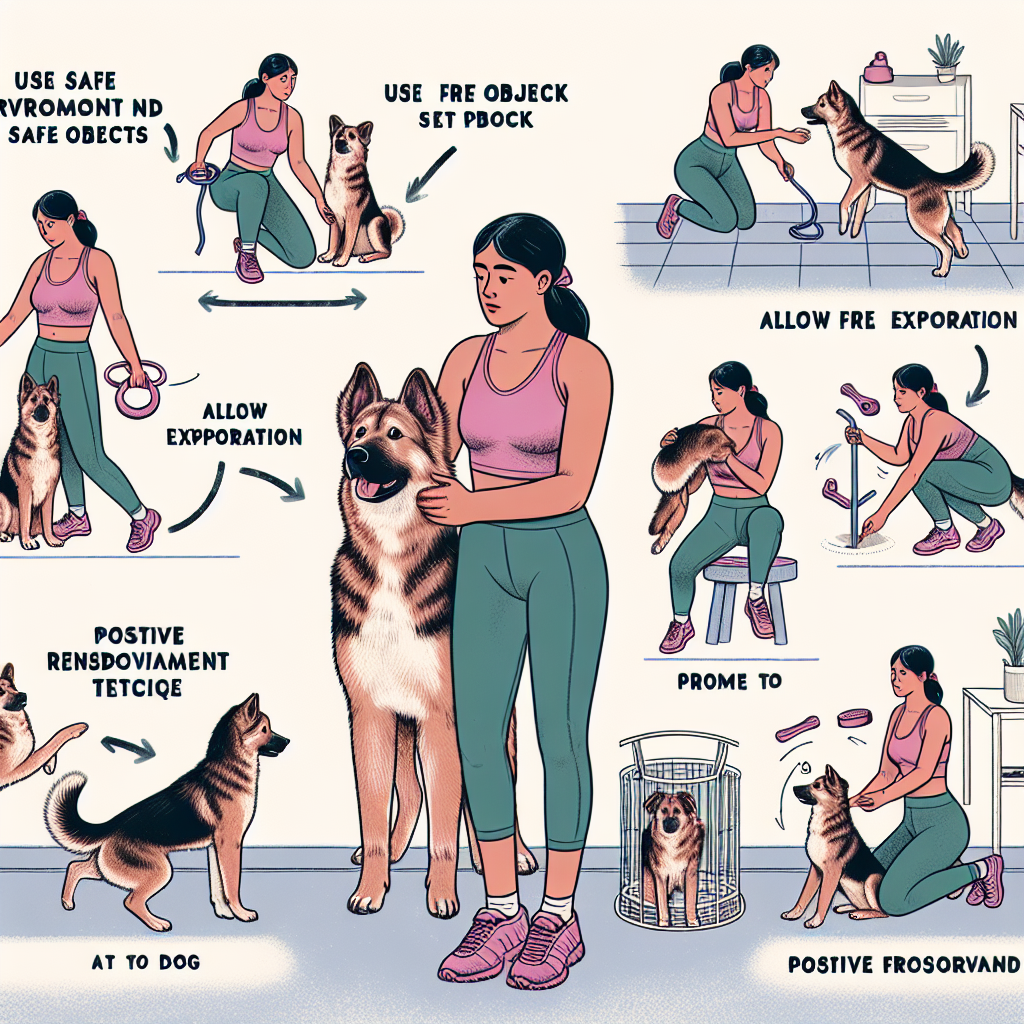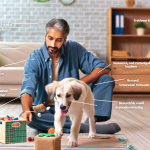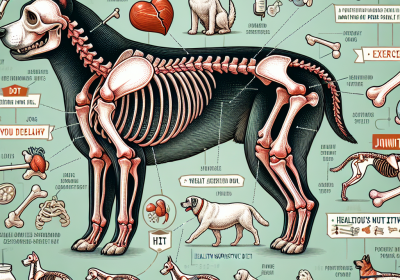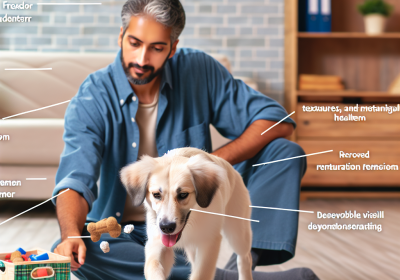How to Get Started with Canine Freework
Table of Contents
Canine Freework is an engaging and enriching activity designed to stimulate a dog’s natural instincts and senses through a variety of exercises and environments. It focuses on allowing dogs to explore and interact with their surroundings at their own pace, promoting mental and physical well-being. To get started with Canine Freework, it is essential to understand the principles behind it, gather the necessary materials, and create a safe and stimulating environment for your dog. This introduction will guide you through the initial steps to embark on this rewarding journey with your canine companion.
Introduction to Canine Freework: Understanding the Basics
Canine Freework is an innovative and engaging approach to dog training that emphasizes the importance of allowing dogs to explore their environment freely and make choices independently. This method not only enhances a dog’s physical and mental well-being but also strengthens the bond between the dog and its owner. To understand the basics of Canine Freework, it is essential to delve into its core principles and the benefits it offers.
At its essence, Canine Freework is about providing dogs with opportunities to engage in natural behaviors in a controlled environment. Unlike traditional training methods that often rely on commands and structured activities, Freework encourages dogs to use their senses to interact with their surroundings. This approach is particularly beneficial for dogs that may be anxious, reactive, or have specific behavioral issues, as it allows them to build confidence and reduce stress through self-directed exploration.
One of the fundamental aspects of Canine Freework is the creation of a safe and stimulating environment. This can be achieved by setting up a designated area with various objects and textures for the dog to investigate. Items such as different types of flooring, toys, and scent trails can be used to create a rich sensory experience. It is important to ensure that the environment is free from potential hazards and that the dog feels secure while exploring.
To get started with Canine Freework, it is crucial to observe the dog’s behavior and preferences. By paying close attention to how the dog interacts with different elements in the environment, owners can gain valuable insights into their dog’s likes and dislikes. This information can then be used to tailor the Freework sessions to better suit the individual dog’s needs. For instance, if a dog shows a particular interest in scent trails, incorporating more scent-based activities can enhance their engagement and enjoyment.
Another key component of Canine Freework is allowing the dog to take the lead. This means giving the dog the freedom to choose what to explore and how long to spend on each activity. Owners should resist the urge to direct or control the dog’s actions, as this can undermine the purpose of Freework. Instead, they should adopt a supportive role, providing encouragement and positive reinforcement as the dog navigates the environment. This approach fosters a sense of autonomy and helps build the dog’s confidence.
In addition to the immediate benefits of physical and mental stimulation, Canine Freework also promotes long-term well-being. Regular Freework sessions can help improve a dog’s problem-solving skills, resilience, and adaptability. Moreover, the positive experiences gained through Freework can contribute to a more balanced and well-adjusted temperament, making it easier for dogs to cope with new or challenging situations.
It is also worth noting that Canine Freework is not a one-size-fits-all solution. Each dog is unique, and what works for one may not be suitable for another. Therefore, it is important for owners to remain flexible and open to adjusting their approach based on their dog’s responses. Consulting with a professional dog trainer or behaviorist who is experienced in Canine Freework can provide additional guidance and support.
In conclusion, Canine Freework offers a holistic and enriching way to engage with dogs, promoting their overall well-being and enhancing the human-animal bond. By understanding the basics of this approach and creating a safe, stimulating environment, owners can help their dogs thrive through self-directed exploration and choice. As with any training method, patience, observation, and a willingness to adapt are key to achieving the best outcomes for both the dog and its owner.
Essential Equipment for Starting Canine Freework

Canine Freework is an engaging and enriching activity that allows dogs to explore their environment, build confidence, and develop problem-solving skills. To get started with this rewarding practice, it is essential to have the right equipment. The proper tools not only ensure the safety and comfort of your dog but also enhance the overall experience. Therefore, understanding the essential equipment for starting Canine Freework is crucial for both novice and experienced dog owners.
First and foremost, a secure and comfortable harness is indispensable. Unlike traditional collars, a harness distributes pressure evenly across the dog’s body, reducing the risk of injury and providing better control. When selecting a harness, it is important to choose one that fits well and is made of durable materials. Adjustable straps and padded sections can add to the comfort, ensuring that your dog can move freely without any discomfort.
In addition to a harness, a sturdy and reliable leash is necessary. While Canine Freework often involves off-leash activities, a leash is still essential for guiding your dog to and from the activity area. A leash that is both strong and flexible will provide the necessary control without restricting your dog’s movements. Retractable leashes can offer additional freedom, but it is important to use them with caution to prevent any sudden jerks or tangles.
Another critical piece of equipment is a variety of sensory enrichment tools. These tools are designed to stimulate your dog’s senses and encourage exploration. Items such as textured mats, scent boxes, and puzzle toys can provide a range of sensory experiences. Textured mats, for instance, can help dogs become accustomed to different surfaces, while scent boxes can engage their powerful sense of smell. Puzzle toys, on the other hand, challenge their problem-solving abilities and keep them mentally stimulated.
Furthermore, it is beneficial to have a selection of treats and rewards on hand. Positive reinforcement is a key component of Canine Freework, and treats can be an effective way to encourage desired behaviors. High-value treats, which are particularly appealing to your dog, can be used to reward successful exploration and problem-solving. It is important to choose treats that are healthy and appropriate for your dog’s dietary needs.
Additionally, a safe and enclosed space is essential for conducting Canine Freework activities. This space should be free from potential hazards and distractions, allowing your dog to focus on the tasks at hand. Whether it is a fenced backyard, a designated area in a park, or an indoor space, ensuring that the environment is secure will provide peace of mind and allow your dog to explore confidently.
Moreover, having a first aid kit readily available is a prudent measure. While Canine Freework is generally safe, accidents can happen. A well-stocked first aid kit should include items such as bandages, antiseptic wipes, and tweezers. Being prepared for minor injuries can prevent them from escalating and ensure that your dog remains healthy and happy.
In conclusion, starting Canine Freework requires a thoughtful selection of essential equipment. A secure harness, a reliable leash, sensory enrichment tools, treats, a safe space, and a first aid kit are all fundamental components. By investing in the right equipment, you can create a positive and enriching experience for your dog, fostering their confidence and enhancing their overall well-being. As you embark on this journey, remember that the goal is to provide a stimulating and enjoyable environment for your canine companion.
Step-by-Step Guide to Your First Canine Freework Session
Canine Freework is an innovative and enriching activity designed to engage your dog’s senses, promote mental stimulation, and enhance the bond between you and your pet. To embark on your first Canine Freework session, it is essential to understand the fundamental principles and follow a structured approach to ensure a positive experience for both you and your dog. This step-by-step guide will help you get started with Canine Freework, providing a comprehensive overview of the necessary preparations, execution, and post-session considerations.
To begin with, it is crucial to select an appropriate environment for your Canine Freework session. Ideally, choose a quiet, enclosed space free from distractions, where your dog feels safe and comfortable. This could be a room in your home, a fenced backyard, or a designated area in a local park. Ensuring a controlled environment will help your dog focus on the activities and reduce the likelihood of external interruptions.
Next, gather a variety of objects and materials that will stimulate your dog’s senses. These can include different textures, scents, and shapes, such as soft blankets, crinkly paper, rubber mats, and scented toys. The goal is to create a diverse sensory landscape that encourages your dog to explore and interact with the environment. Additionally, consider incorporating items that can be manipulated or moved, such as cardboard boxes, tunnels, and balance boards, to further engage your dog’s curiosity and problem-solving skills.
Once you have assembled your materials, arrange them thoughtfully within the chosen space. Spread the items out to create distinct areas of interest, ensuring there is enough room for your dog to navigate comfortably. It is important to avoid overcrowding the space, as this can overwhelm your dog and hinder their ability to engage with the activities. Instead, aim for a balanced layout that encourages exploration while maintaining a sense of order.
With the environment prepared, it is time to introduce your dog to the Canine Freework session. Begin by allowing your dog to enter the space at their own pace, giving them the freedom to explore and investigate the various objects and materials. It is essential to remain patient and avoid directing your dog’s actions, as the primary objective of Canine Freework is to foster independent exploration and decision-making. Observe your dog’s behavior closely, taking note of their preferences and any signs of discomfort or anxiety.
As your dog becomes more comfortable with the environment, you can gradually introduce additional challenges and activities. For example, you might hide treats or toys within the sensory landscape, encouraging your dog to use their nose and problem-solving abilities to locate the hidden items. Alternatively, you could incorporate simple training exercises, such as asking your dog to sit or stay while they navigate the space. These activities can help to build your dog’s confidence and reinforce positive behaviors.
After the session, it is important to provide your dog with an opportunity to rest and recover. Canine Freework can be mentally and physically stimulating, so allowing your dog to relax and process their experiences is crucial for their overall well-being. Additionally, take some time to reflect on the session, considering what worked well and any areas for improvement. This will help you to refine your approach and ensure that future sessions are even more enjoyable and beneficial for your dog.
In conclusion, getting started with Canine Freework involves careful preparation, thoughtful execution, and mindful reflection. By creating a safe and engaging environment, allowing your dog to explore independently, and gradually introducing new challenges, you can provide a rewarding and enriching experience that promotes your dog’s mental and physical well-being.
Read more about Canine Freework
What is Canine Freework?
– The Definition of Canine Freework
– Benefits of Canine Freework for Dogs
– History of Canine Freework
– Different Types of Canine Freework
– How to Get Started with Canine Freework









